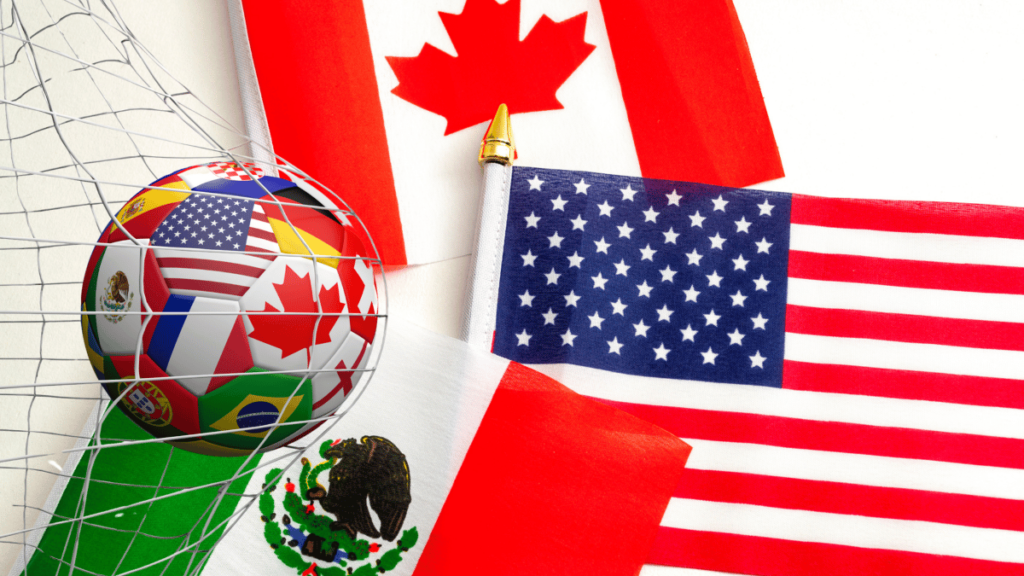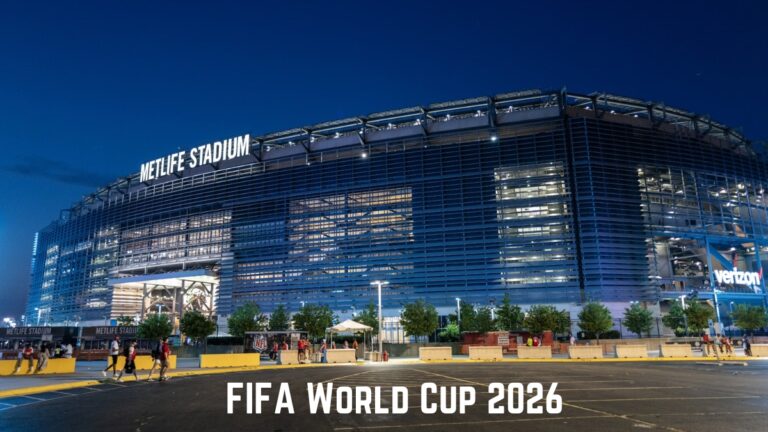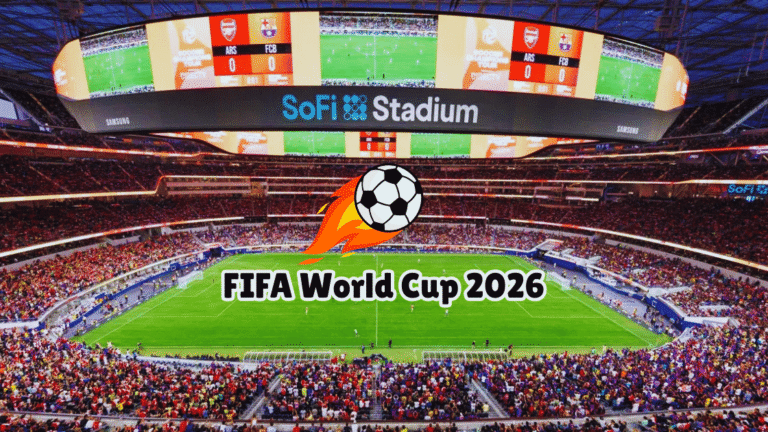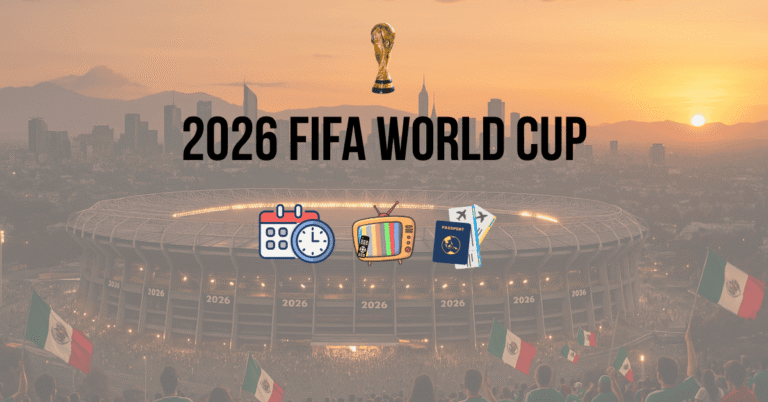2026 FIFA World Cup: Everything you need to know
As one of the top sporting events globally the FIFA World Cup gathers fans and nations in a memorable football celebration.
The 2026 event will be remarkably exceptional because it will feature an increased number of teams and stages. This will be a special World Cup because it will happen in three countries the United States, Canada and Mexico.
In this post, we will discuss the upcoming 2026 FIFA World Cup, including team numbers, groups, the new format, and other important facts you need to know.

How Many Groups in World Cup 2026?
For the first time in the history of the FIFA World Cup, the tournament will feature 12 groups, with four teams in each group.
This expansion from the traditional 8 groups is part of FIFA’s commitment to making the event more inclusive and giving more countries the chance to compete on the world stage.
Each group will play a round-robin format, with the top two teams from each group, along with the eight best third-placed teams, advancing to the knockout stage.
The increased number of groups will create more excitement, as the stakes in each match will be higher with the introduction of more knockout round contenders.
Fans can expect to see more underdog stories, as smaller nations get their chance to shine on football’s grandest stage.
How Many Teams in World Cup 2026?
One of the biggest changes in the 2026 World Cup is the expansion from 32 teams to 48 teams. This is a massive leap in terms of participation, and it’s designed to increase global representation.
The previous format, which featured 32 teams, had been in place since 1998. Now, with 48 teams, more nations from continents like Africa, Asia, and Oceania will have the opportunity to compete.
Here’s a breakdown of how the 48 teams will be distributed across the globe:
- Europe (UEFA): 16 teams.
- Africa (CAF): 9 teams.
- Asia (AFC): 8 teams.
- North America (CONCACAF): 6 teams + 3 automatic host slots (USA, Canada, Mexico).
- South America (CONMEBOL): 6 teams.
- Oceania (OFC): 1 team.
This increase ensures that football fans will get to witness a more diverse range of styles and talents from all corners of the globe.
Additionally, intercontinental playoffs will decide the remaining spots, ensuring a fair chance for teams on the cusp of qualification.
What is the FIFA World Cup 2026 Format?
The expanded format for the 2026 World Cup is one of the most significant changes in recent history. Here’s how it will work:
Group Stage:
- The tournament begins with the 12 groups, each consisting of four teams.
- Each team plays three group-stage matches.
- The top two teams from each group and the eight best third-placed teams (based on points and other tiebreakers) will progress to the knockout stage.
Knockout Stage:
- This brings us to a new round of 32, which is a massive expansion from previous World Cups.
- Once the knockout stage begins, it will follow the traditional single-elimination format. The excitement will build as teams fight for survival in each round.
Total Matches and Tournament Length:
- The tournament will now feature 104 total matches, a significant increase from the 64 matches played in the previous editions.
- It will span across 39 days, allowing for a thrilling, extended football feast.
- One of the key points to note is that despite the increase in teams and matches, the number of games played by the teams reaching the final will remain the same.
- Teams that make it to the final will still play a maximum of eight matches, ensuring that player fatigue is managed while delivering high-quality football.
Hosts Automatically Qualify for 2026 World Cup
Another exciting aspect of the 2026 World Cup is that the tournament will be hosted by three countries – the United States, Canada, and Mexico – making it the first time in World Cup history that three nations are co-hosting the event. As is customary, all three host nations will automatically qualify for the tournament.
This automatic qualification means that CONCACAF will have three of its six places automatically filled by the host nations. The remaining teams from the region will fight for the other three spots, along with one additional spot that will be determined through an intercontinental playoff.
This makes the tournament particularly exciting for North American football fans, as they will get to see their home nations compete without going through the rigorous qualification process.
Regional Qualification Breakdown
With the expansion to 48 teams, the distribution of spots for each confederation has been altered:
- Africa sees the biggest increase, with nine direct spots.
- Asia will send eight teams to the tournament, up from the previous 4.5.
- Europe remains dominant with 16 slots.
- Oceania will now have 1 direct spot, a first for the region.
This new distribution ensures that the World Cup continues to grow in global reach and impact, allowing more nations to participate and experience the tournament’s prestige.
Why Did FIFA Expand the World Cup?
The decision to expand the World Cup was driven by several factors. Firstly, FIFA wanted to make the tournament more inclusive by allowing more nations to qualify. This expansion reflects the growing popularity of football worldwide, especially in regions like Africa and Asia, where the sport continues to flourish.
Moreover, the expansion is expected to increase the commercial value of the tournament. With more matches, there will be greater broadcast and sponsorship opportunities, generating more revenue for FIFA and host countries. However, FIFA was also careful to ensure that the expanded format would not burden the teams with additional games.
Impact of the Expanded Format on the Tournament
The new format is expected to have both positive and negative impacts on the World Cup:
Positive: More nations will be able to compete, meaning fans from countries that have historically struggled to qualify now have more reason to cheer. This will also likely lead to more unpredictable results, adding to the drama of the tournament.
Potential Drawbacks: With more matches, there may be concerns about scheduling and logistics, especially as teams travel between host cities in three countries.
The 2026 FIFA World Cup is set to be the biggest and most exciting edition yet. With 48 teams, 12 groups, and a new knockout format, the tournament promises to deliver more football, more drama, and more unforgettable moments.
As the first World Cup hosted by three nations, it will be a historic event for football fans everywhere.
Whether you’re cheering for the traditional powerhouses or an emerging underdog, this World Cup will have something for everyone.
So, get ready for a tournament like no other – because the 2026 FIFA World Cup will be a celebration of football on a truly global scale.






